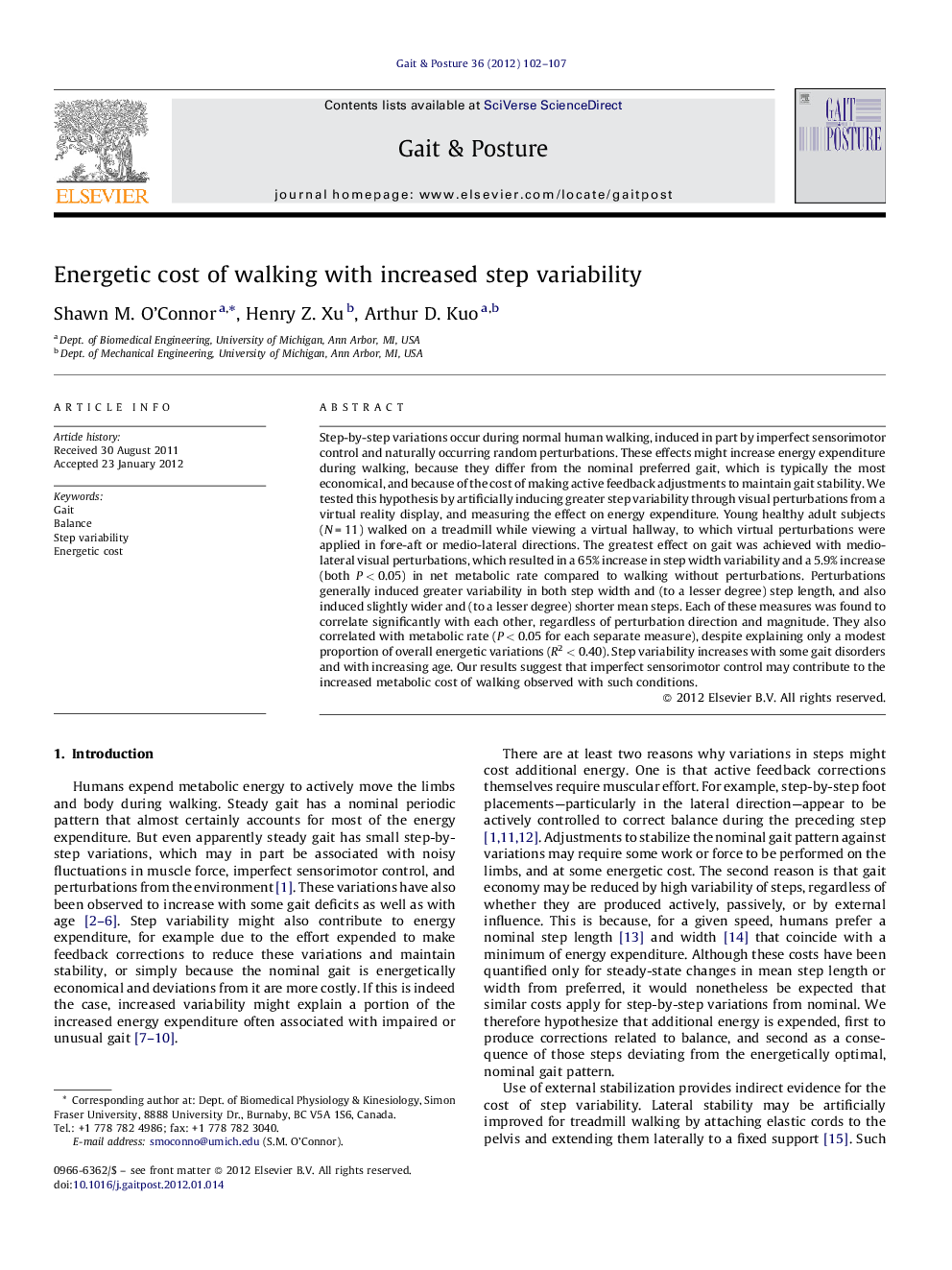| Article ID | Journal | Published Year | Pages | File Type |
|---|---|---|---|---|
| 6207446 | Gait & Posture | 2012 | 6 Pages |
Step-by-step variations occur during normal human walking, induced in part by imperfect sensorimotor control and naturally occurring random perturbations. These effects might increase energy expenditure during walking, because they differ from the nominal preferred gait, which is typically the most economical, and because of the cost of making active feedback adjustments to maintain gait stability. We tested this hypothesis by artificially inducing greater step variability through visual perturbations from a virtual reality display, and measuring the effect on energy expenditure. Young healthy adult subjects (NÂ =Â 11) walked on a treadmill while viewing a virtual hallway, to which virtual perturbations were applied in fore-aft or medio-lateral directions. The greatest effect on gait was achieved with medio-lateral visual perturbations, which resulted in a 65% increase in step width variability and a 5.9% increase (both PÂ <Â 0.05) in net metabolic rate compared to walking without perturbations. Perturbations generally induced greater variability in both step width and (to a lesser degree) step length, and also induced slightly wider and (to a lesser degree) shorter mean steps. Each of these measures was found to correlate significantly with each other, regardless of perturbation direction and magnitude. They also correlated with metabolic rate (PÂ <Â 0.05 for each separate measure), despite explaining only a modest proportion of overall energetic variations (R2Â <Â 0.40). Step variability increases with some gait disorders and with increasing age. Our results suggest that imperfect sensorimotor control may contribute to the increased metabolic cost of walking observed with such conditions.
⺠We tested the effect of increased step variability on energy expenditure of walking. ⺠We induced step variability with visual perturbations and measured metabolic rate. ⺠Lateral perturbations caused greatest step variance and a 6% greater metabolic rate. ⺠Step variability correlated with energy cost across visual perturbation conditions. ⺠Step variability may explain increased cost of walking with age and gait disorders.
